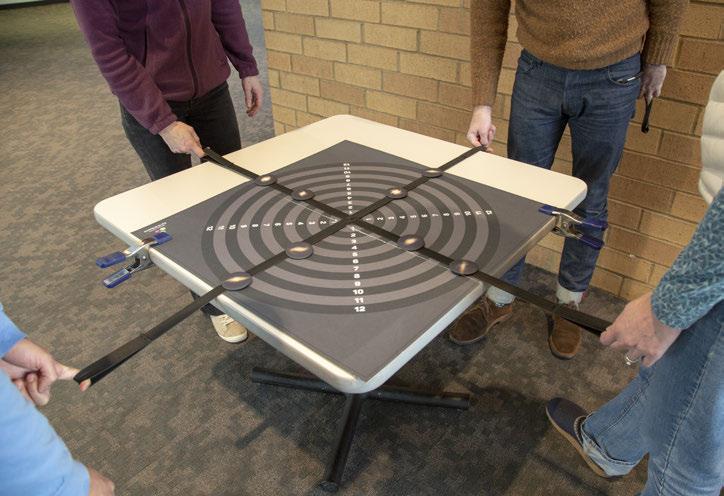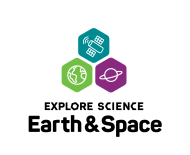DESCRIPTION
This activity includes a hands-on model of the way the universe is expanding—and how it has been expanding since the Big Bang. As participants pull at the edges of a stretchy model universe, they see that the space between objects in the universe is expanding, even if the objects stay the same size. The activity also explains how, even though it appears from our perspective that we're in the center of the universe, there is in fact no center of the universe!
DESCRIPTION
This activity includes a hands-on model of the way the universe is expanding—and how it has been expanding since the Big Bang. As participants pull at the edges of a stretchy model universe, they see that the space between objects in the universe is expanding, even if the objects stay the same size. The activity also explains how, even though it appears from our perspective that we're in the center of the universe, there is in fact no center of the universe!
TRAINING VIDEOS
OBJECTIVES
BIG IDEA
Astronomers make observations and use mathematical models to understand how the universe changes.
LEARNING GOALS
- Most of the galaxies we can observe are moving away from each other as the universe expands.
- The beginning of the universe, over 13.8 billion years ago, was like a sudden expansion from a very hot, dense state.
DOWNLOAD FILES
- Expanding Universe activity guide (PDF)
- Expanding Universe measurement board (PDF)
- Expanding Universe facilitator guide (PDF)
- Raisin Bread Universe Model info sheet (PDF)
- Expanding Universe galaxy buttons (PDF)
- Center of the Universe info sheet (PDF)
- Big Bang Model info sheet (PDF)
- Expanding Universe table sign (PDF)
- Raisin Bread Universe Model info sheet (Spanish) (PDF)
- Expanding Universe activity guide (Spanish) (PDF)
- Big Bang Model info sheet (Spanish) (PDF)
- Center of the Universe info sheet (Spanish) (PDF)
- Expanding Universe table sign (Spanish) (PDF)
Credits
Science Museum of Minnesota
Sciencenter
This material is based on work supported by NASA under cooperative agreement award numbers NNX16AC67A and 80NSSC18M0061. Any opinions, findings, and conclusions or recommendations expressed in this material are those of the author(s) and do not necessarily reflect the view of the National Aeronautics and Space Administration (NASA).
Creative Commons Attribution Non-Commercial Share Alike 3.0 United States (CC BY-NC-SA 3.0 US).
View more details

NISE Network products are developed through an iterative collaborative process that includes scientific review, peer review, and visitor evaluation in accordance with an inclusive audiences approach. Products are designed to be easily edited and adapted for different audiences under a Creative Commons Attribution Non-Commercial Share Alike license. To learn more, visit our Development Process page.


